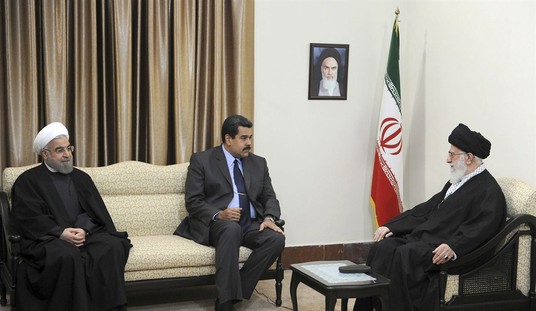A new educational benefit for veterans kicked in at the beginning of this month, marking the first time since 1984’s revamping of the Montgomery GI Bill that Congress has acted to improve education opportunities for servicemen and women after separation.
This new program, known as the Post-9/11 GI Bill, is exclusively available to military veterans (and the dependents of veterans) who served on or after September 11, 2001. Sponsored in the Senate last year by former Navy Secretary and current Virginia Democrat Jim Webb, the “Post-9/11 Veterans Educational Assistance Act” (S.22) rewrote and rebuilt the entire veterans’ educational benefit structure.
Under the Post-9/11 program, the buy-in formerly required of enlistees, who had to pay $1,200 over the course of their first 12 months in service in order to be eligible for up to $36,000 in monetary benefits, is eliminated. A $1,200 annual allowance for books and supplies has been added to the program, as has a generous housing allowance that is based on the Basic Allowance for Housing earned by an active duty E-5 (with dependents) and can reach up to $3,000 a month in tax-free cash.
Further, the Post-9/11 program moves veterans’ education benefits away from the Montgomery GI Bill modus operandi of shoehorning every student-veteran into a one-size-fits-all monthly benefit payment plan. Under the previous GI Bill, which is being phased out with the debut of the Post-9/11 benefit, a student was paid a set dollar amount per month depending on the number of credit hours taken in that month, with the maximum amount being received if the servicemember was considered a “full-time student” (enrolled in 12 or more semester hours).
This inflexibility created difficulty for many students. For example, those who took courses in the summer (when, due to the compressed schedule, a full course load is considered six hours by institutions, rather than 12) were only given credit for half-time enrollment and paid accordingly during those months. This resulted in beneficiaries’ real income being slashed, as enrolling in a full course load in the summer meant that months of benefit (which was capped at 36) were used at a less than full-time rate, resulting in overall benefit money being left on the table.
The Post-9/11 GI Bill changes this entirely, altering the program to entirely cover tuition and fees at any college or university at a level up to that state’s highest undergraduate public school rate. Under this program, payments will be made directly to the institution by the Department of Veterans Affairs, rather than monthly checks being sent to the beneficiary for deposit and use.
This will make life easier for veterans in most states — especially those states which have not worked to keep tuition or fees down at their most expensive public schools. In Texas, for example, veterans of the post-9/11 military are eligible to enroll at schools that charge up to $1,471 per credit hour at no additional charge to themselves, meaning veterans going back to school in the Lone Star State will not have as much trouble paying for private school education as they would in states whose public colleges have kept costs down. In Wisconsin, that number is capped at $663.00 per hour, but out-of-control fees are no object for student-veterans, as the GI Bill will cover those up to $30,979 per term.
Veterans returning to school in states whose colleges and universities have kept costs under control, on the other hand, are by and large limited to public schools for continuing education, even if they have the aptitude to be accepted by a private college. Massachusetts, for example, boasts four prestigious private institutions of higher learning in the Boston area alone, but with the public schools around Harvard, MIT, et al having kept tuition rates low, the maximum rate per credit hour that the Post-9/11 GI Bill will pay for Massachusetts veterans is $71.50. In Harvard square, that’s about enough money to get you a cup of coffee and a Harvard Crimson baseball cap — not to continue or complete a higher education.
Contrast this with New York, where veterans are eligible for 100 percent tuition coverage up to $1,010.00 per credit hour and fee coverage up to $12,697 per term. Add those together, assuming the minimum course load to be considered “full time,” and New Yorkers have up to $36,937 per academic year paid for by the Post-9/11 GI Bill. With tuition and fees at prestigious (and private) Columbia University totaling $39,326 in the 2008-2009 academic year, an Ivy League education for those New York-bound veterans who qualify is well within reach — much more so than in Massachusetts.
In states whose public institutions are comparable to their privates, though, the Post-9/11 GI Bill is a boon for veteran education regardless of top-end dollar figures. At the University of Georgia, for example, where I earned my undergraduate degree, in-state tuition and fees are $5,264. A six-year veteran of the armed forces who enlisted after 9/11 would have that amount paid to the school by the Post-9/11 GI Bill and would, once a year, directly receive a $1,200 book allowance.
On top of that would be the real money-maker for Post-9/11 recipients: the monthly housing allowance, a feature no version of the GI Bill has featured before now. A student in Athens, Georgia, where UGA is located, would receive $901.00 per month in untaxed housing allowance (for perspective, a student apartment in Athens, with roommates, generally costs between $350 and $650 per person, and a house can be rented for just over $1,000 total). Taking that allowance into account, the total benefit received by a University of Georgia student under Post-9/11 (assuming summer enrollment) would be $17,276, of which $12,012 would be paid directly to the beneficiary.
Contrast that with the amount paid out under the previous benefit, the Montgomery GI Bill. A student who took a full course load year-round (and who participated in the 2002 “buy up,” by which servicemembers could chip in an extra $600 in exchange for up to $6,000 in additional benefit) was directly paid a total of $13,974.50 regardless where he or she attended school. That breaks down to $11,768 for the eight months of spring and fall semesters, when the student could take a full 12-hour course load, and $2,206.50 for the three months of summer, when six hours is recognized as a full load by institutions but only as half-time enrollment by the MGIB.
The Post-9/11 GI Bill is a hands-down better benefit than its predecessor. That is not to say, though, that there are not some problems with it. Rather than capping every state’s hourly tuition payment at a rate equal to the highest in-state public school cost, the Post-9/11 should recognize an amount below which the rates will not go, so that deserving veterans in Massachusetts ($71.50/hour) or Washington, D.C. ($197.92/hour), for example, would not be shut out of top institutions.
Simply averaging every state and territory’s maximum in-state rate would result in a baseline of $320.83 per credit hour — not enough to cover tuition at Georgetown or MIT, but certainly more helpful than the pittance currently offered separated veterans seeking to attend higher-end schools. An even better way of dealing with this would be to simply have the Post-9/11 cover the full cost of veteran students at any college or university to which they could gain acceptance. The prospect of fully guaranteed payment would encourage capable servicemembers to strive for higher-end educations, while also providing those higher-end institutions with an incentive to accept separating veterans into their undergraduate and graduate programs.
The latter proposition would not be cheap. However, in an age of trillion-dollar deficits, runaway frivolous government spending, and “stimulus” packages, kicking more of that money in the direction of those veterans who have served during the last eight years of a two-front war and heightened homeland security threat should not be too much to ask.









Join the conversation as a VIP Member